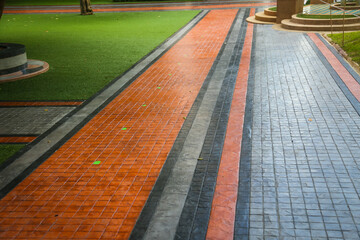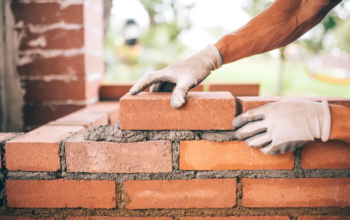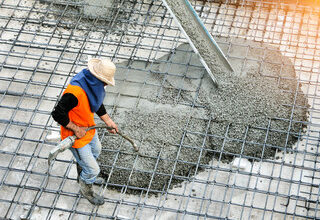You’ve probably heard of Stamped Concrete, but you might not be sure what it is and what it can do for your home. This type of concrete can be stamped to look like many different natural materials, including brick, slate, and even flagstone. Stamping is an extremely popular way to customize your concrete, so if you’re planning on adding it to your home, you should know what you’re getting yourself into.

Stamped concrete is an excellent option for those who want a unique look for their home. Besides the fact that stamped concrete can mimic many natural materials, this type of decorative concrete is less expensive than other types of concrete. Because it is cheaper to produce and install, this type of concrete can be colored and patterned to match any color scheme you might have in mind. Stamping concrete is relatively easy and involves pressing molds into plastic-like concrete.
There are many different steps involved in the process. First, the surface is leveled and textured. Once the concrete reaches the desired plasticity, a color hardener is applied. The color hardener is thrown on the surface evenly and absorbs water from the concrete. The color hardener will eventually dry, and a second layer will be added after 24 hours. Once the second layer of color hardener has dried, the stamped concrete can be used.
While stamping concrete sounds simple, there is much room for error. Getting it wrong can lead to uneven edges, which aren’t good for the appearance of your home. On the other hand, it is faster and cheaper than pavers or stonework. While it may seem like an easy process, it is essential to hire a professional contractor or serious do-it-yourselfer to complete the project.
Another type of stamped concrete is imprinted or textured concrete. These types of concrete can mimic wood, brick, or tile and look much like a real surface. It is often preferred for outdoor paving and pool decks, and they are highly durable. And they require less maintenance than most other materials. Stamped concrete can be made of different colors, so there is no need to worry about matching the color to your home’s exterior.
When choosing a pattern for stamped concrete, there are five main categories: brick, stone, wood, and slate. The types of patterns can vary depending on your preference and your home’s hardscape. For best results, choose a pattern that complements your home’s architectural style and the rest of your landscaping. Once you’ve made a decision, the next step is to choose the right stamps for your concrete project. If you’re not sure which one will work best for your home, consider getting a professional to do it for you.
If you want to use colored concrete, you must ensure that it has a good color release agent. There are two types of color release: powder and liquid. Powder color release is made of calcium-releasing materials that repel water. Liquid color release is made of a light aromatic solvent and spreads on the surface of the concrete before stamping. The powder form is applied to the bottom of the concrete stamps. It is important to check the plasticity of the concrete before stamping. Otherwise, the stamped concrete may not be strong enough to support weight or retain the imprint.
The main difference between plain concrete and stamped concrete is that the former is less durable. Regular concrete can last up to 25 years, while stamped concrete can last for decades. The main difference is that regular concrete can have hidden cracks that will eventually affect the stamped surface. These cracks will cause further damage to the concrete and need to be repaired. Then, you can apply a new coat of concrete sealing to preserve the beauty and luster of your stamped concrete.



